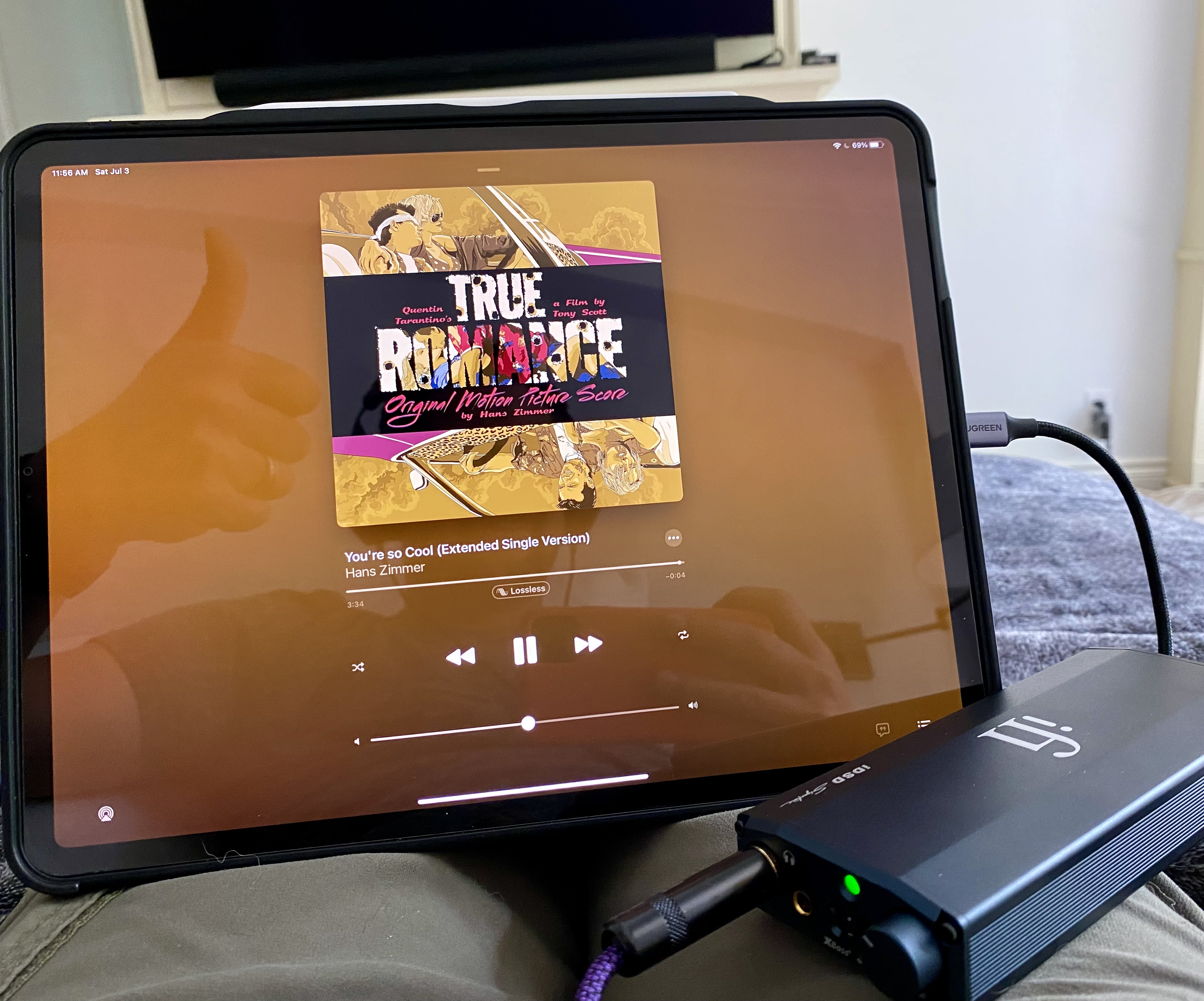I own / have owned quite a lot of iFi products. I have a sweet spot in my heart for their products. But that brings with it some well-meaning criticism as well. Allow me to rant on a little about this, as you've touched upon in your post, I sense you've perceived one of the problems iFi has had for some time now, which gets progressively worse as time goes by. They have painted themselves into a corner with the way they have chosen to go about designing their product line(s). It comes from this dogmatic belief that someone high up in the company once had about "The best DAC chips of all time" and "What sounds the best to everyone, according to me" philosophy that they seemingly based a company around. And they have stuck to this like a fly on honey to this day.
There is only so many things you can do design and product differentiation wise, if you've for whatever reason decided that this one DAC chip is the best sounding chip, and that's the one we're going to use, in every single product, vertically and horizontally. So your left with what we see in iFi today.
You can put more chips in. 2x Dual core and 4x "Custom interleaved configuration", because more is better, right? Sure it is, if done right, but only a little. And of course differentiate by features. I'm sure many of us have wondered why iFi just doesn't just build "The Definitive iDSD", like the actual product that would kill the competition in the price segment, the logical progression of the iDSD line and the definitive upgrade for all previous model users.
Well because such a device would make a large portion of their line-up completely irrelevant! If they were to release a
"iFi Opti iDSD Definitive edition". Complete with fully differential internal topology, 4,4 mm differential output, 6.3 mm single ended and 3,5 mm S-Balanced headphone outputs. Balanced 4,4 mm line out, 3,5 mm analog input, xBass, 3D, switch for the internal filters, high quality custom designed filters running off custom iFi firmware on the 16 core xMos, NOS mode, iFi's Bluetooth implementation. iPurifier tech on all digital inputs. Full MQA decoder. I mean, that's it right there, that is
-The product-. But that's not what we got. Because that product would kill off iFis lineup. Why would you want anything else they have? (Maybe the Pro iDSD)
Instead, we got this stripped down black label (optimized internal layout in marketing speak) "Signature edition" with a 4,4 mm just sort of glued on there "for convenience sake" they said. And also, no you can't have analog input this time and no you can't use our features (xbass, 3D) on the pre-amp either. No Bluetooth. But the price goes up.
Some of us thought "Huh, this is kind of strange... but this is "The Signature" after all so it's gotta be good, it's gotta be The Thing!"
And Nope. Not. The Diablo drops, and now we understand why the The Signature is the way it is, all those features were going to the Diablo. Again because product segmentation on the balanced / differential aspect. Totally stripped of features this time. More power/balanced. No Bluetooth this time either. Price goes up.
They can't put BT in because that would kill the xDSD, analog inputs would kill the xCAN. And of course, look at the iDSD line up we have. Why so many, what differentiates one to the next? Not a whole lot, that makes any sense, other than trying so hard to differentiate their products. Instead of having a genuine soild product worthy of iFis innovative brand name and "Signature" stamp, we get a split, a fractured set of iDSDs , each incomplete in a sense. Hollow and never reaching the full potential of the line up. OR iFi will actually release such a product in the near future, and in the process be stepping on the toes of all of those who bought a previous model of iDSD, they now own an even worse model than they had before. And if they actually do upgrade to this new ultimate iFi platinum eternal edition, what says that they won't get screwed over again because a next version is coming around the corner? Customers like new products. But not like this. We like actually new producs.
This is sort of the issue. Where to go from here? 3x Core DSD1793 gold label DAP? The competition is killing it with complete packages that has everything you'd ever need in one box plus some more on top! And they're actually objectively speaking way ahead in almost every parameter you can imagine. And they give the customer the choice to decide for themselves what they think sounds the best! They're the ones who are going to live with and listen to it after all. Varying different topologies and DAC chips to choose from.
But iFi are entrenched in this dogmatic belief around this one old chip, that they have decided for all their customers what chip sounds the best. In someone who workes / worked at iFis subjective opinion, this is The Best Sound Quality. Period. Your personal taste is a non-factor. No matter it happens to be, all things considered, a relatively old outdated and cheap chip, that's why it is cheap you know. The market has decided that it is not worth more at this point in time relative to the competing products. But it has an almost mystical backstory behind it (this chip has more marketing fluff surrounding it than anything I've seen. Imagine the same level of marketing effort but insert the ES9010K2M there instead, how weird would that be?) of being made in this Burr Brown factory in Japan in a far away time, where the skilled japanese burr brown masters made The Best Sounding Chip, before the evil big Texas Instruments corporation, came and bought up Burr Brown and subsequently took their designs and iterated on them and made improvements to the design. iFi would have you believe that TI actually made the chip worse(!) for every iteration TI made, sort of against all common sense logic and objective proof of the opposite.
Why won't we as customers get a chance or the choice of listening to a, say DSD1796 design (that chip is not that much more expensive actually, so it's also kind of cheap.) or a DSD1794 design? That one has way better performance and would even be somewhat competitive in todays landscape! They all have the same basic architecture, just iterated and improved upon over time. Well because they don't sound as good of course. How do we know that? We don't, but iFi said so. So that seems to be good enough for some people for some reason unknown to me. I'm not saying put AK4499s in everything and follow the herd and loose your identity and all the previous marketing work you've done around all of it. I'm just saying like... guys, just open your mind a little tiny bit and expand your perspective and at least think about upgrading in the same line of DAC chips, at least?(!) Or use the savings you get by using the cheaper chip and put in a better interpolator chip before the dac? or something? Your products suffer and so does your image and it only is going to get worse over time, It's already showing its ugly effects. I'm aware you don't or doesn't want to see it but, It'll just be so painfully obvious at some point in the near future. You already have idiots ranting about this on the forums (you know, like me), so obviously something ugly is starting to show.
Ok rant over. I hope I made some sort of sense in these ramblings. Way too much text I know, sorry

I'm new here, I don't know how to remove this quote I don't want to include anymore, lol ^^
Edit: Ok never mind, It disappeared! :O
The xmos does not save any last filter switch positions. The onboard linear phase filters reside on the DAC chip itself. The xmos firmware gets replaced and the GTO-filter assumes all of the interpolation duties for the entire unit. The DSD1793 is put into filter bypass mode rendering the switches inert. I assume the bit perfect filter is also "thrown out" to make space on the xmos for the GTO-filter.
With the GTO-firmware installed. From there on, any perceived differences you hear by flipping the filter switch position, you are simply listening to your own "brain ghosts" so to speak. It's not that you don't hear differences.
You actually do, hear differences. The thing is that they are not real, they are an "auditory illusion". That's how it works. We are able to check for these, and then they disappear, revealing the truth.
A visual example was easier for me to understand when I learned all this, the visual illusion with the black squares, the white lines and the "black dots", you know? It's not that I don't see the black dots between the squares. I see them, they are there for sure. I could sit here for days moving my eye position, changing the patterns, convincing myself the dots are stronger and better aligned in this way, and bigger if I squint my eyes. But, we are forgetting the fact that the black dots are not actually there. They are a visual illusion. Any perceived differences I saw are... completely inconsequential, because they weren't actually there.
Although, I couldn't quite make it out from your post, but It is possible you've heard something actually different. But not by the switches. The GTO-filter only upsamples incoming data to a maximum of 384 kHz. Anything at that rate (or 352 kHz) would bypass the GTO-filter and go straight to the delta sigma modulator and ICOB for conversion. In such a case, the particular software used and that interpolation filter would have left its sonic signature on the data. In this case it is possible you'd actually have better dynamic range and noise performance due to also bypassing the GTO-firmwares down dithering.
Without the GTO-filter, the same would happen with sending 352 / 384 kHz data.
But, if sending a maximum of 192 kHz, the DSD1793 will interpolate this data 8x up to a maximum of 1536 kHz before sending it to the conversion stage. Resulting in a lot less distortion at the output.
These kinds of things can make for an audible difference, regardless of filter switch positions.






























 I'll try 7.2.
I'll try 7.2.









 In fact ifi is using not only TI chips in their current product range if memory serves me well.
In fact ifi is using not only TI chips in their current product range if memory serves me well.
 This is basically the heart of the confusion that exists. Oh and of course if it matters if the amps internal topology is differential from input to output, or if it's good enough with a non-differential internal topology with differential outputs. But this is a whole lot for some other time haha! These kinds of discussions can get to me after a while. I'm not a patient person, I just can't any more, you know?
This is basically the heart of the confusion that exists. Oh and of course if it matters if the amps internal topology is differential from input to output, or if it's good enough with a non-differential internal topology with differential outputs. But this is a whole lot for some other time haha! These kinds of discussions can get to me after a while. I'm not a patient person, I just can't any more, you know?  )
)




